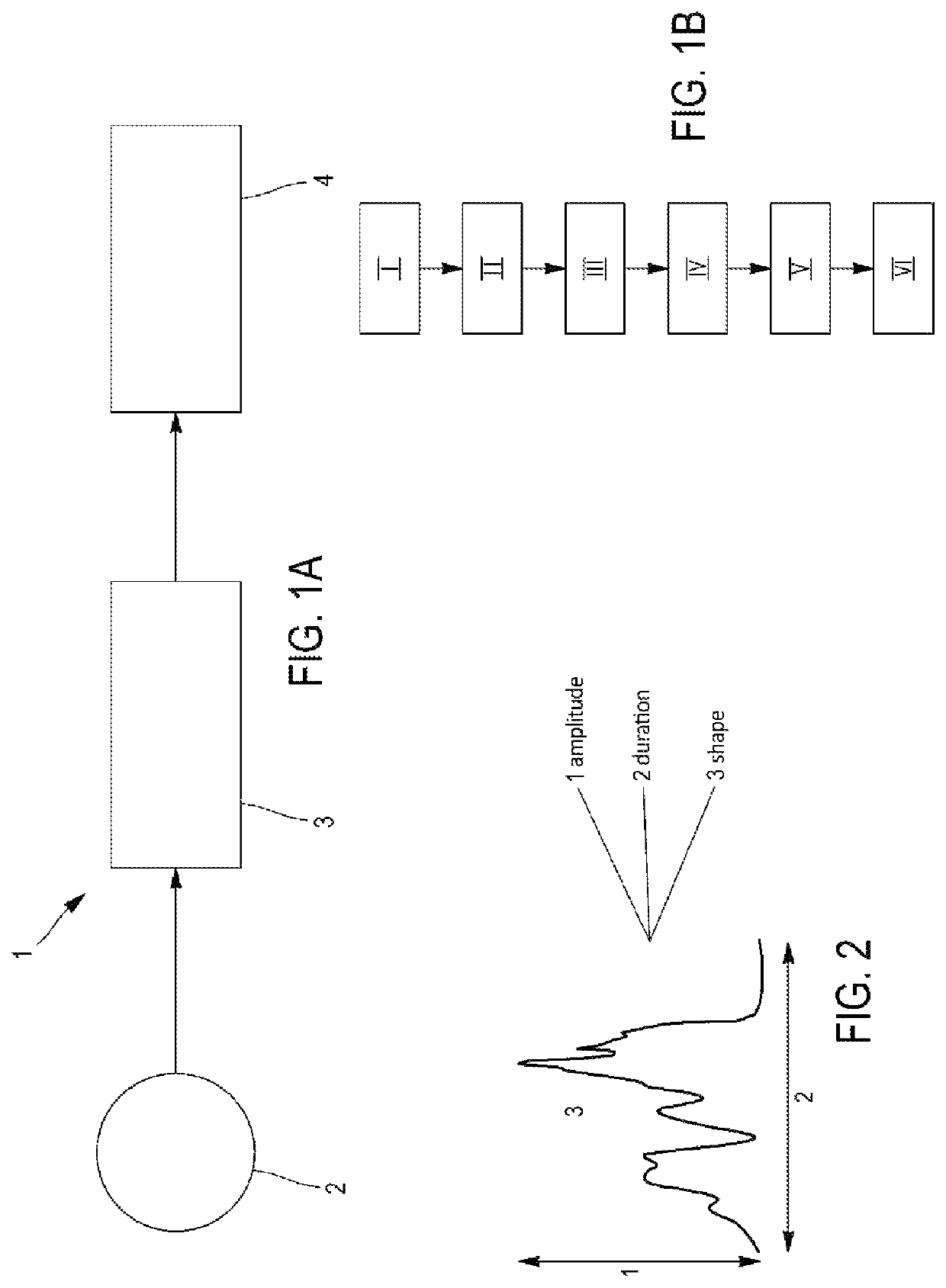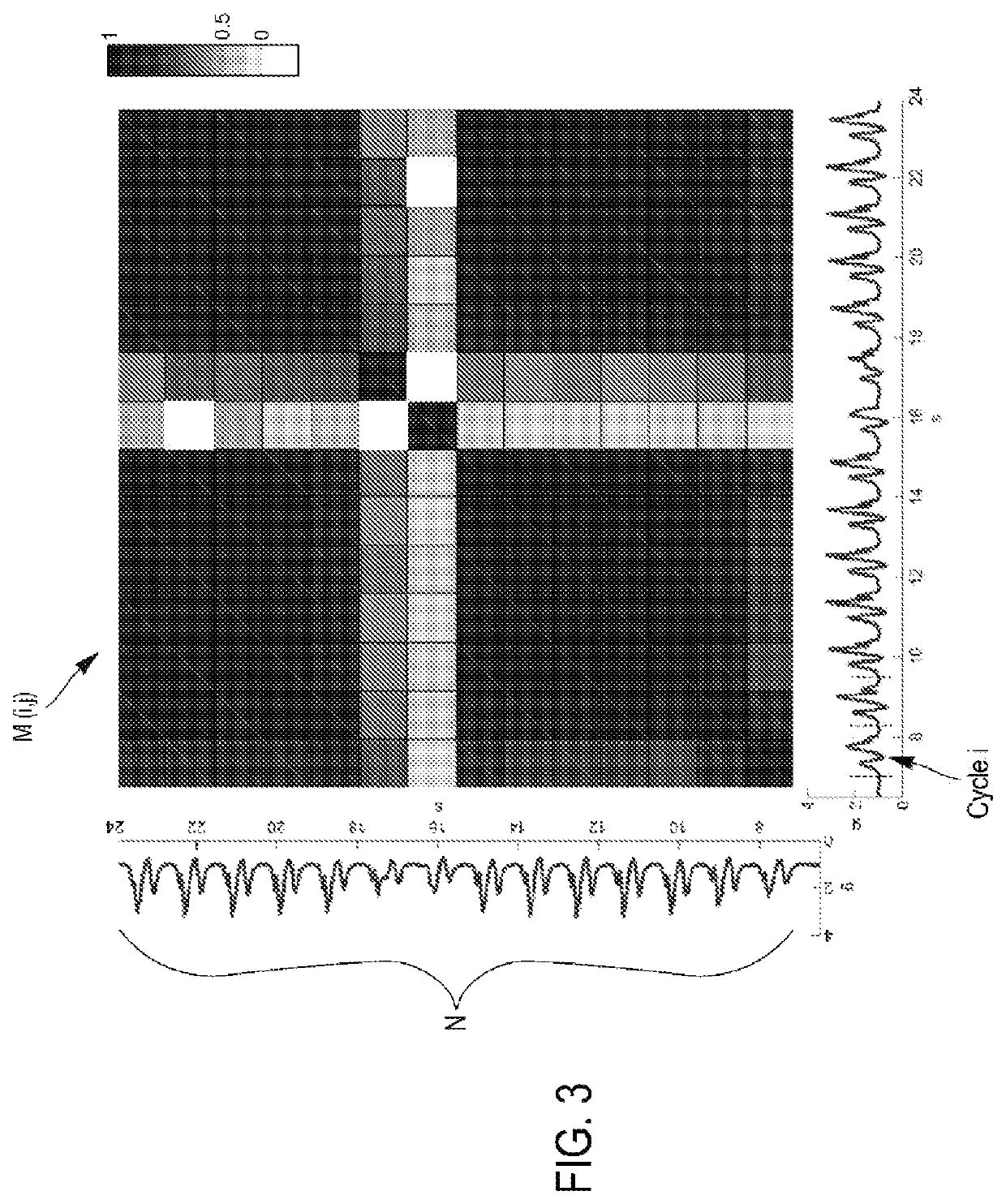Locogram software: tool for analysing gait exercises
a gait exercise and software technology, applied in distance measurement, medical science, diagnostics, etc., can solve the problems of not being able to investigate the subject of viewing the intermediate data between the uninterpretable raw time signals and the parameters, and not being able to provide analytical information on the origin of the gait chang
- Summary
- Abstract
- Description
- Claims
- Application Information
AI Technical Summary
Benefits of technology
Problems solved by technology
Method used
Image
Examples
first embodiment
[0103]In a first embodiment illustrated in FIG. 3, the similarity coefficient between the signal Ci relating to the gait or running of one of the person's feet (right or left foot, respectively) and the signal Cj relating to the gait or running of the same foot, and the number of N=Nr (or Nl) cycles, number of cycles of the right foot (or the number of cycles of the left foot) are represented.
second embodiment
[0104]In a second embodiment illustrated in FIGS. 4a to 6b, the display means 4 display:[0105]the similarity coefficients (fij, aij, dij) calculated for a single foot 3;[0106]also the similarity coefficient (fij, aij, dij) between the signal Ci relating to the gait or running of the person's right foot and the signal Cj relating to the gait or running of the person's left foot, and N=Nr+Nl.
[0107]In this case, all the investigated cycles of the right foot, then all the investigated cycles of the left foot (or vice versa) are in chronological order, on the x and y axis of the matrix, as illustrated in FIGS. 4a to 6b. They are separated here in the representation by a zone O, which results in four subsquares.
[0108]Thus, the similarity matrix:[0109]‘right foot / right foot’ is represented by the bottom left subsquare;[0110]‘left foot / left foot’ is represented by the top right subsquare;[0111]‘left foot / right foot’ is represented by the bottom right subsquare.
[0112]When the similarity coef...
third embodiment
[0127]In a third embodiment, the similarity coefficient may be an amplitude similarity coefficient.
[0128]In this case, as illustrated in FIGS. 6a and 6b, the processing and calculation unit 3 is set up, for example, to:[0129]calculate an amplitude Ai, Aj of the signal Ci and of the signal Cj,[0130]calculate the amplitude similarity coefficient aij, which is the ratio of the smallest amplitude Ai, Aj to the largest amplitude Ai, Aj, in order to bring the value of the coefficients between 0 and 1.
[0131]The amplitude Ai and Aj is, for example, the standard deviation or the root mean square.
[0132]Once the calculations have been performed to find the values of the similarity coefficients,
[0133]the processing and calculation unit 3 is set up to calculate:[0134]parameters for evaluating the regularity of the gait;[0135]parameters for evaluating the symmetry of the gait;[0136]the number of cycles necessary to establish a gait sequence or sub-sequence.
[0137]In particular:[0138]the parameter ...
PUM
 Login to View More
Login to View More Abstract
Description
Claims
Application Information
 Login to View More
Login to View More - R&D
- Intellectual Property
- Life Sciences
- Materials
- Tech Scout
- Unparalleled Data Quality
- Higher Quality Content
- 60% Fewer Hallucinations
Browse by: Latest US Patents, China's latest patents, Technical Efficacy Thesaurus, Application Domain, Technology Topic, Popular Technical Reports.
© 2025 PatSnap. All rights reserved.Legal|Privacy policy|Modern Slavery Act Transparency Statement|Sitemap|About US| Contact US: help@patsnap.com



